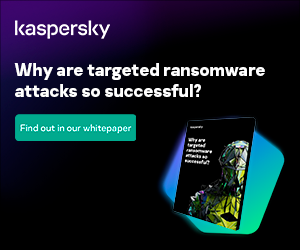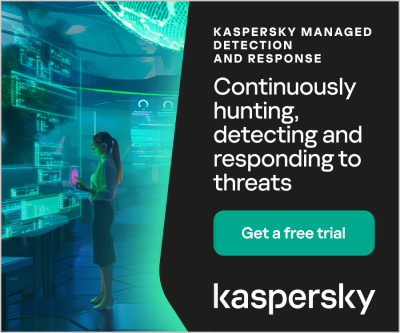Highlights:
- A fully automated solution secures apps, APIs, and infrastructure, mapping attack surfaces and blocking API threats in real time with tailored security policies.
- Advanced L7 protection defends against DDoS attacks by distinguishing legitimate from malicious traffic, with automatic defense against zero-day threats.
Applications is at the heart of the operations of many organizations that drive internal, partner, and customer-facing business activities.
It is necessary for these enterprises to verify the significance of safeguarding their applications, as the threat landscape is coming out to be more frequent, sophisticated, and intense.
Meanwhile, as application development and deployment rising, traditional web application firewall (WAF) solutions are turning out to be ineffective. It needs a completely new approach application protection management.
Navigating Risks in a Digital World
Threat analysis hub reports a 392% increase in blocked malicious events by its cloud WAF service (2022 vs. 2021) and a 105% rise in bad bot transactions. Over 50% of organizations reported experiencing multi-vector attacks monthly or more frequently.
This highlights the need for a combination of solutions, including WAFs, API protection, bot management, and DDoS defense, to address all attack vectors.
However, the effectiveness of these solutions depends on skilled application protection experts. In 2022, even top organizations across various industries faced application-level attacks, showing the increasing sophistication of cyber threats, challenging CISOs and their teams.
The Lifecycle of Application Development and Deployment
Historically, applications were monolithic and hosted in private data centers. Today, they are deployed across diverse environments like traditional data centers, private clouds, and public clouds.
Modern applications adopt microservices architecture, integrating third-party services and extensively using APIs for communication. Many also include client-side code, making user devices part of the application.
This shift demands new protection strategies beyond traditional on-premises WAFs, even when deployed in cloud environments.
Challenges and Requirements in Managing Application Protection
Evaluation of the role of on-premises WAFs has become necessary due to significant issues driven by modern application architectures and rising threat landscapes. It includes:
- Management overhead: Rising applications and diverse deployments make protection complex and resource intensive.
- Cyber expertise shortage: Rising threats demand modern skills, but expert availability lags.
- Limited protection quality: On-prem WAFs rely on local policies, lack advanced ML/AI algorithms, and struggle to secure BOTs and APIs.
- Incomplete coverage: Modern architectures with multiple access points (servers, cloud, APIs, client-side) need broader protection beyond traditional WAF capabilities.
- Agility and scalability: Deploying new services is labor-intensive, impacting responsiveness and making scaling application protection a major issue.
Outdated WAFs: Struggling to Secure Modern Apps
The growing complexity of modern applications, self-managed on-premises WAFs are becoming inadequate. Below are some of the challenges in application security:
- Management overhead: Protecting numerous applications across diverse environments has become increasingly unmanageable.
- Cyber expertise gap: Advanced threats demand skills that are scarce, making it hard for organizations to maintain robust protection.
- Limited protection: On-prem WAFs lack advanced ML/AI capabilities and struggle to secure BOTs, APIs, and evolving threats effectively.
- Incomplete coverage: Modern architectures with multiple access points (servers, cloud, APIs, client-side) exceed traditional WAF capabilities.
- Agility and scalability issues: Deploying new services is labor-intensive, hindering organizational responsiveness and scalability.
Advanced Application Protection as a Service
Advanced application protection as a service offers cloud-based security for modern applications, using modern technologies like machine learning and behavioral analysis to protect against emerging threats such as DDoS attacks, bots, and zero-day vulnerabilities.
This solution provides real-time protection, decreases the operational burden, and reduces the need for self-managed security measures. It guarantees comprehensive defense across various environments, making it crucial for organizations looking to secure their digital assets with lesser overhead.
-
Web application security firewall
The Web Application Firewall (WAF) delivers enhanced protection for web applications against various cyber threats. It employs a positive security model that analyzes user behavior to create customized security policies. By combining both positive and negative security models, the WAF effectively addresses the OWASP Top 10 threats and mitigates zero-day attacks that traditional WAFs might overlook.
-
API protection
A fully automated, end-to-end solution secures apps, APIs, platforms, and infrastructure. It maps API attack surfaces using deep discovery, generates tailored security policies, and blocks API-focused attacks in real time.
It also combines access controls, data leak prevention, bot management, and DoS mitigation to counter API threats, including those in the OWASP API Security Top 10.
-
Bot manager
Advanced bot management solution spots and distinguishes between humans, good bots, and bad bots to safeguard web applications, mobile apps, and APIs.
It utilizes behavioral modeling, collective bot intelligence, and device fingerprinting to guard against OWASP 21 automated threats, like account takeover, credential stuffing, DDoS, and web scraping.
-
Application DDoS protection
Advanced application-layer (L7) protection defends against DDoS attacks using a unique behavioral approach that distinguishes legitimate from malicious traffic, offering automatic defense against zero-day attacks.
With hybrid, always-on, and on-demand cloud DDoS deployment options, cloud DDoS protection service provides top-tier security against a range of threats, including HTTP floods, low-and-slow attacks, and brute-force assaults.
-
Client-side protection
Modern client-side protection protects end-user data when collaborating with third-party services in the application supply chain.
It also blocks suspicious requests, ensures compliance with data security standards, and protects against client-side attacks like formjacking and skimming.
Additionally, continuous discovery of third-party services, detailed activity tracking, and threat-level alerts help avoid data leakage and malicious scripts.
Finally, the solution also uses surgical enforcement to block only harmful scripts without disrupting necessary JavaScript services.
-
ERT active attacker’s feed
ERT active attackers feed acts as a network intelligence tool, augmenting application and data center security by combining a pre-emptive layer on top of attack mitigation solutions.
It provides a list of recently active attackers, such as those involved in DDoS, application attacks, intrusions, or scans, allowing the platform to block known threats before they can target your assets.
Conclusion
Self-managed on-prem WAFs are no longer effective due to operational burden and the lack of cybersecurity experts, resulting into inefficiencies and compromised protection.
As application architectures evolve, on-prem WAFs fail to offer a consistent solution across diverse environments. Cloud WAF addresses these issues by providing comprehensive, AI-driven application protection with fast deployment.
Enhance your understanding by delving into various security-related whitepapers accessible through our resource center.
























































